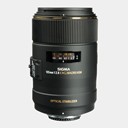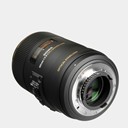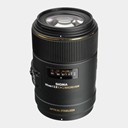SIGMA 105mm F2.8 EX DG OS HSM Macro Lens For Nikon
Sigma is a Japanese based family owned manufacturer of DSLR cameras, camera lenses and camera accessories. Liked by everyone is that Sigma lenses are typically value-priced. Sigma lenses are available in Canon, Nikon and other brands.



